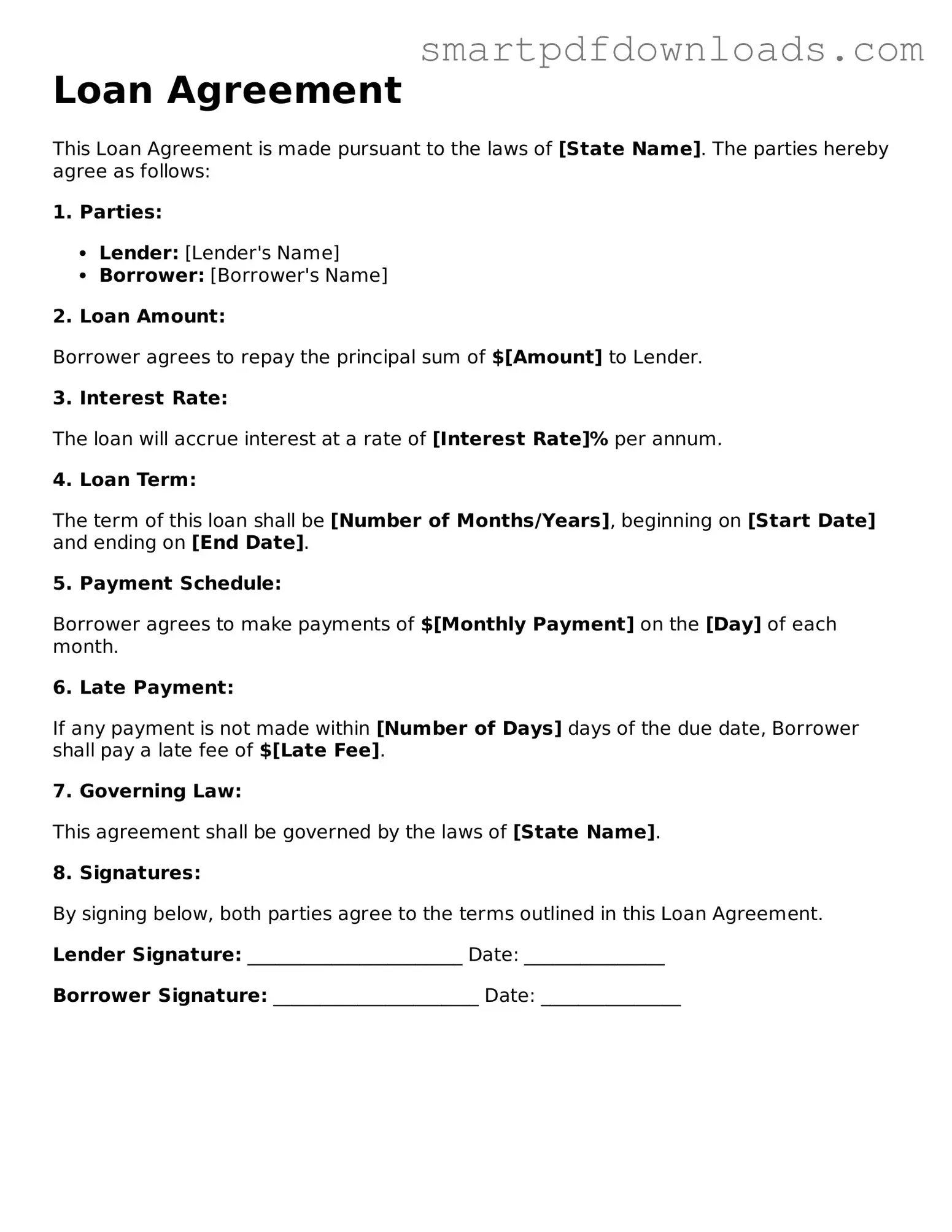Loan Agreement
This Loan Agreement is made pursuant to the laws of [State Name]. The parties hereby agree as follows:
1. Parties:
- Lender: [Lender's Name]
- Borrower: [Borrower's Name]
2. Loan Amount:
Borrower agrees to repay the principal sum of $[Amount] to Lender.
3. Interest Rate:
The loan will accrue interest at a rate of [Interest Rate]% per annum.
4. Loan Term:
The term of this loan shall be [Number of Months/Years], beginning on [Start Date] and ending on [End Date].
5. Payment Schedule:
Borrower agrees to make payments of $[Monthly Payment] on the [Day] of each month.
6. Late Payment:
If any payment is not made within [Number of Days] days of the due date, Borrower shall pay a late fee of $[Late Fee].
7. Governing Law:
This agreement shall be governed by the laws of [State Name].
8. Signatures:
By signing below, both parties agree to the terms outlined in this Loan Agreement.
Lender Signature: _______________________ Date: _______________
Borrower Signature: ______________________ Date: _______________
